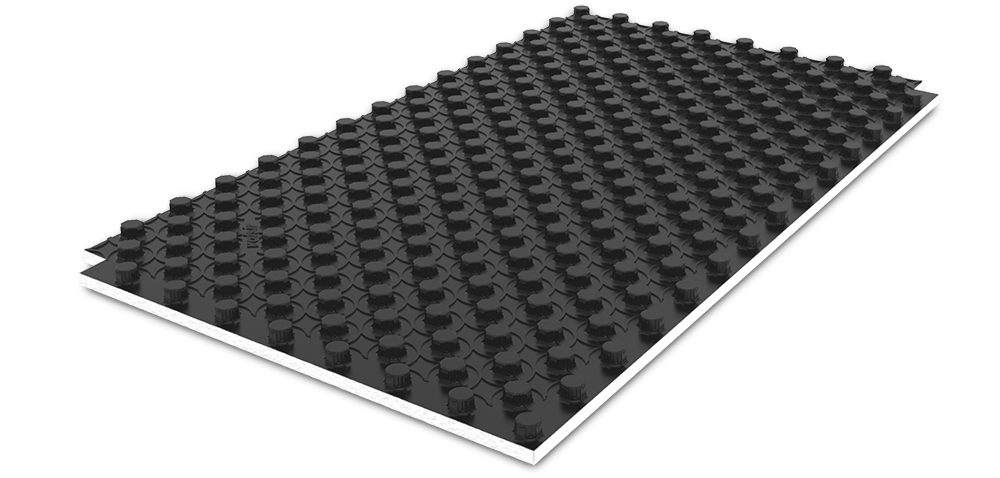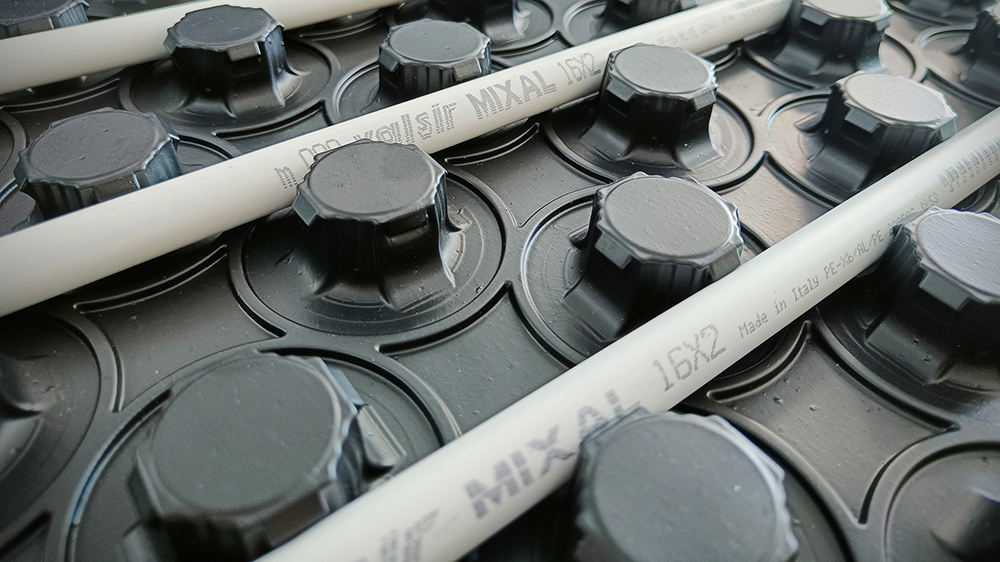V-ERRE is pre-formed insulation panel in sintered expanded polystyrene coupled to a black thermoformed sheet in high impact polystyrene (HIPS).
The sheet creates a sort of top shell with a thickness of 600 μm, often considered to have only the function of a shockproof mechanical protection. Instead, it also serves as a support for the coupling between two adjacent sheets: on the two sides, in fact, the shell extends beyond the dimensions of the EPS with “oversized” knobs which go on top of those of the adjacent panel, binding them to each other and preventing the screed, even if particularly liquid as in the case of livellina levelling compounds, from seeping between one sheet and another.

The shell also acts as a block and support to the piping distributing the heat-transfer fluid embedded in the screed. The knobs have rounded teeth that allow the piping to be laid without it popping out of its position between one and another; around the knobs, a series of rings create the ribs at the base of the shell in such a way as to reduce the support points of the piping and facilitate the casting of the screed around it, which serves to improve performance and energy efficiency.
What is the V-ERRE panel like?
As mentioned, the V-ERRE insulating component is in sintered expanded polystyrene, achieved by expanding the polymer obtained by the styrene; the result is a very light material, which can be 90% composed of air and - specifically due to this - has high insulating characteristics.

According to the type of installation, the required sheets will have a higher or lower capacity of crushing resistance, and conform to precise requisites of environmental sustainability. For this purpose, the range includes the main model, in the colour white; the V-ERRE panel in grey added with graphite, which improves the insulating behaviour; and the V-ERRE CAM, which integrates a percentage of recycled raw material.
Radiant systems are also an environmentally sustainable choice because they optimise energy consumption and can be combined with 'green' solutions such as photovoltaic panels and heat pump.
The standard of reference, EN 1264, has introduced many innovations in the area of radiant systems; in particular, the 2021 revision has filled a series of important gaps: today, the technologies on the market finally have a definition in the technical standard, guaranteeing a greater flexibility of choice also for designers.
In this framework, the V-ERRE range confirms its suitability both to new construction and renovated buildings, and makes it possible to guarantee in every circumstance the thermal resistances defined with the project. In the case of a new building, the thermal resistance must be achieved directly by the insulating layers installed below the tubing, whereas with renovations they can include the underlying structures, included the floor slab itself. The thicknesses of 23, 45 and 60 mm chosen for the V-ERRE Grafite range correspond to the minimum dimensions required by the standard.
 Italiano
Italiano
 English
English
 Deutsch
Deutsch
 Français
Français
 Español
Español
 Greek
Greek